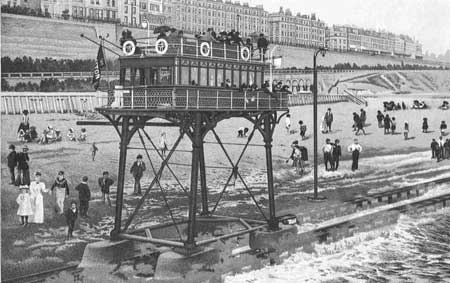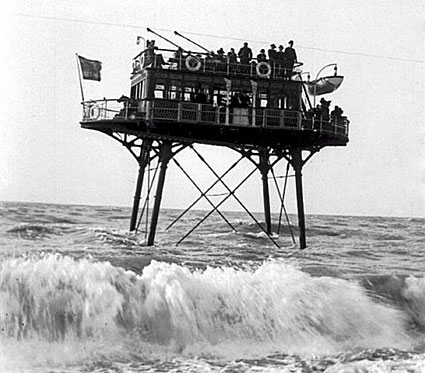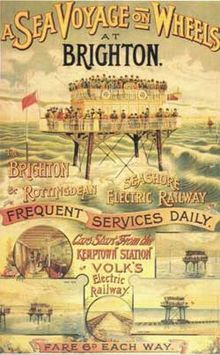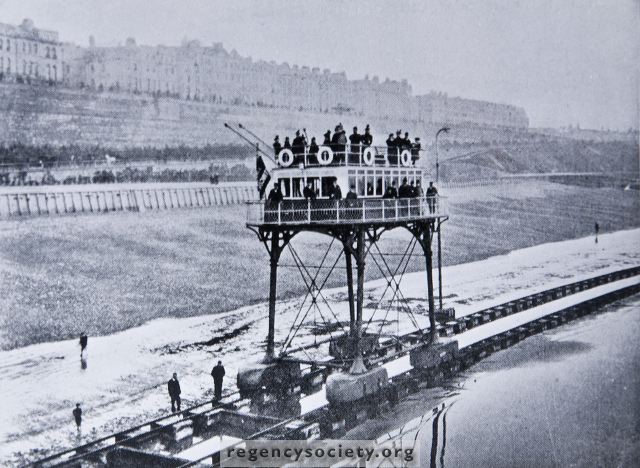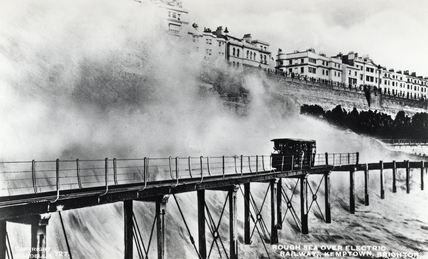Brighton and Rottingdean Seashore Electric Railway
The Brighton and Rottingdean Seashore Electric Railway ( German as: "Electrical coastal railway Brighton Rottingdean " ) was a leading by the sea in Brighton railway line for public transport. Construction began in 1894, opening on November 28, 1896 The official name of the single railcar was Pioneer, but many passengers called the train Daddy Long Legs (such as " long-legged arachnid ")..
The route connected the seaside resorts Rottingdean and Brighton and was a maximum of 80 meters from the beach. The approximately 45 -tonne vehicle was a boat -like structure at about 7 m high stilts. A total of four four-wheeled bogies ran on two parallel tracks laid with 2 feet and 8.5 inches (828 mm) gauge. From the distance of each outer rail, a theoretical " total gauge " returned by 18 feet ( 5486 mm). The railcar moved to its current from a two-pole overhead line. One problem was the underpowered of the vehicle, because the water resistance was so great that only a walking pace was possible at high tide.
A storm destroyed the vehicle and parts of the track less than a week after the opening. The train, however, was rebuilt and reopened on 20 July 1897.
In 1901, the city council decided to build a protective barrier beach. This cut the railway track, and the operator, Volk's Electric Railway, would have to move the tracks around the barrier deeper into the water. To this end, the money was missing, and the railway should be temporarily shut down until sufficient capital would be available for the conversion work. However, the city council had removed the tracks, which led to the final closure.
At low tide you can see some of the concrete sleepers to see.

